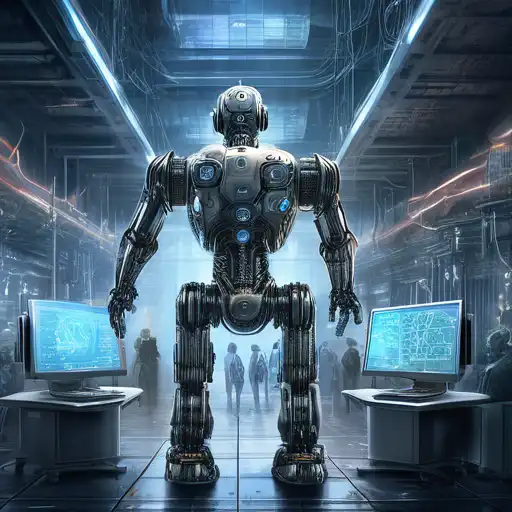Introduction to AI and Machine Learning
In the rapidly evolving world of technology, Artificial Intelligence (AI) and Machine Learning (ML) stand out as two of the most groundbreaking advancements. While often used interchangeably, these terms represent distinct concepts with unique applications and implications. This article delves into a comparative study of AI and ML, shedding light on their differences, similarities, and how they're shaping the future.
Understanding Artificial Intelligence
AI is a broad field of computer science focused on creating systems capable of performing tasks that typically require human intelligence. These tasks include problem-solving, recognizing speech, and making decisions. AI can be categorized into two types: narrow AI, which is designed to perform a narrow task (e.g., facial recognition), and general AI, which can perform any intellectual task that a human can.
Understanding Machine Learning
Machine Learning, a subset of AI, involves the development of algorithms that allow computers to learn from and make predictions based on data. Unlike traditional programming, where humans write explicit instructions, ML models improve their performance as they are exposed to more data over time. ML is further divided into supervised learning, unsupervised learning, and reinforcement learning.
Key Differences Between AI and ML
- Scope: AI encompasses a wider range of technologies and applications, while ML is specifically focused on data-driven learning.
- Functionality: AI aims to simulate human intelligence, whereas ML seeks to learn from data to make predictions or decisions without being explicitly programmed.
- Dependency: ML is dependent on data to learn and improve, while AI can operate based on predefined rules and doesn't necessarily require data to function.
How AI and ML Work Together
Despite their differences, AI and ML often work hand in hand. ML provides the foundation for many AI systems, enabling them to learn from data and improve over time. For example, AI-powered virtual assistants use ML to understand and respond to user queries more effectively.
The Future of AI and ML
The integration of AI and ML is driving innovation across industries, from healthcare to finance. As these technologies continue to evolve, we can expect more sophisticated applications that further blur the lines between human and machine capabilities. The potential for future tech trends is limitless, with AI and ML at the forefront.
Conclusion
AI and Machine Learning are transforming the way we live and work. While they share common goals, their approaches and applications differ significantly. Understanding these differences is crucial for anyone looking to leverage these technologies in their field. As we move forward, the synergy between AI and ML will undoubtedly unlock new possibilities and redefine what's possible in the digital age.
